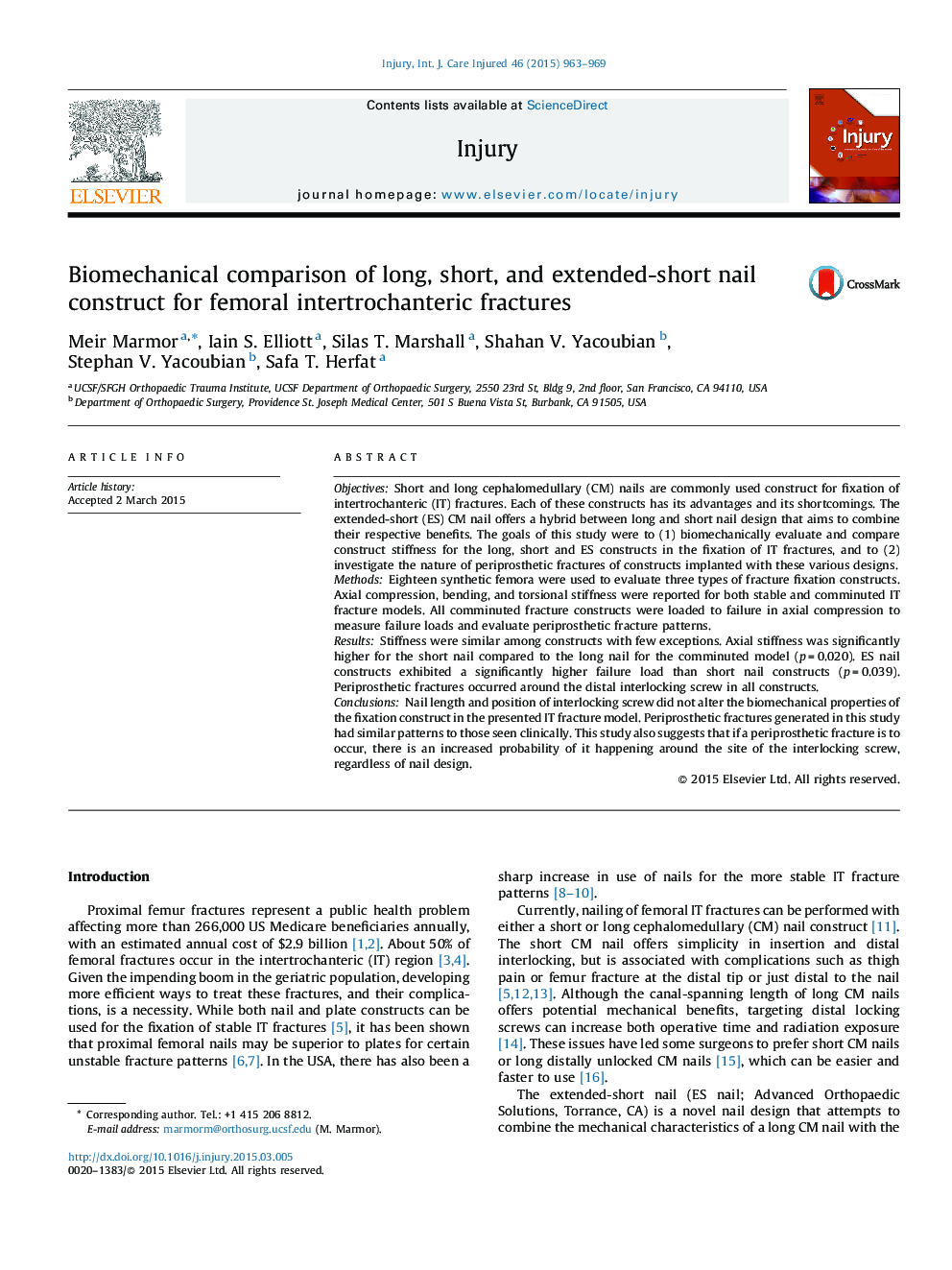| کد مقاله | کد نشریه | سال انتشار | مقاله انگلیسی | نسخه تمام متن |
|---|---|---|---|---|
| 6083375 | 1205993 | 2015 | 7 صفحه PDF | دانلود رایگان |
ObjectivesShort and long cephalomedullary (CM) nails are commonly used construct for fixation of intertrochanteric (IT) fractures. Each of these constructs has its advantages and its shortcomings. The extended-short (ES) CM nail offers a hybrid between long and short nail design that aims to combine their respective benefits. The goals of this study were to (1) biomechanically evaluate and compare construct stiffness for the long, short and ES constructs in the fixation of IT fractures, and to (2) investigate the nature of periprosthetic fractures of constructs implanted with these various designs.MethodsEighteen synthetic femora were used to evaluate three types of fracture fixation constructs. Axial compression, bending, and torsional stiffness were reported for both stable and comminuted IT fracture models. All comminuted fracture constructs were loaded to failure in axial compression to measure failure loads and evaluate periprosthetic fracture patterns.ResultsStiffness were similar among constructs with few exceptions. Axial stiffness was significantly higher for the short nail compared to the long nail for the comminuted model (p = 0.020). ES nail constructs exhibited a significantly higher failure load than short nail constructs (p = 0.039). Periprosthetic fractures occurred around the distal interlocking screw in all constructs.ConclusionsNail length and position of interlocking screw did not alter the biomechanical properties of the fixation construct in the presented IT fracture model. Periprosthetic fractures generated in this study had similar patterns to those seen clinically. This study also suggests that if a periprosthetic fracture is to occur, there is an increased probability of it happening around the site of the interlocking screw, regardless of nail design.
Journal: Injury - Volume 46, Issue 6, June 2015, Pages 963-969
